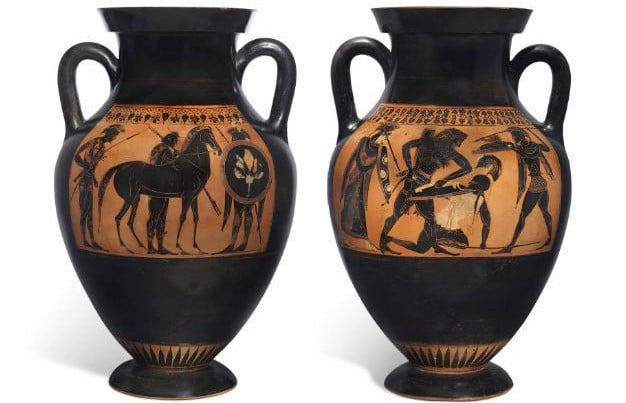Law & Politics
Christie’s Withdraws Antiquities Linked to Fraudsters Medici and Becchina
The pair took the Getty for a ride a decade ago.

The pair took the Getty for a ride a decade ago.

Brian Boucher

Four items that were to sell at Christie’s London this week have been withdrawn from the sale based on possible links to disgraced art dealers Giacomo Medici and Gianfranco Becchina, Christie’s has confirmed to artnet News. The Greek and Italian antiquities were to go to auction Wednesday, April 15.
Medici was convicted in 2004 of dealing in looted antiquities. J. Paul Getty Museum curator Marion True, who resigned in 2005, was among those found to have done business with Medici. In 1984, Becchina sold the Getty a statue of a kouros (youth), billing it as a Greek antiquity; it was later revealed to be a fake.
In January, Italian authorities seized looted antiquities valued at about $58 million from Swiss warehouses in an investigation into Becchina (see $58 Million Trove of Looted Antiquities Uncovered in Raid).
“We will now work with Scotland Yard’s Art and Antiques Unit to discover whether or not there is a basis for concerns expressed over the provenance,” a press representative for Christie’s told artnet News via email.
In its defense, Christie’s says that it does not have access to the archives of objects handled by Medici and Becchina and so could not identify looted objects before publishing its sale catalogues. In an email to artnet News, the auction house calls on the authorities with access to the records to make them public.
The sellers of the objects are anonymous, and little information is provided on their provenance. They bore estimates ranging from about $1,500 up to $100,000.
The priciest is a vase from the region of Athens, dated ca. 540-520 B.C., measuring about 19 inches high and painted with a scene of Hercules dispatching an opponent. It is assigned to a private collection in Japan, which bought it prior to the 1980s, according to Christie’s, which then sold it at auction in New York in 2002 for about $54,000.
Another painted vase, this one from the Apulian region of Italy dated about 650 B.C., was tagged at up to around $26,000. It had been off the market since 1986, when the current owner bought it at Sotheby’s London.
Also withdrawn are an Etruscan terracotta head of a satyr, from the late sixth or early fifth century B.C. and estimated at up to $7,345, which the present owner bought at Sotheby’s London in 1985; and a pair of Apulian bottles from about 320 B.C., which were estimated at up to $2,200.